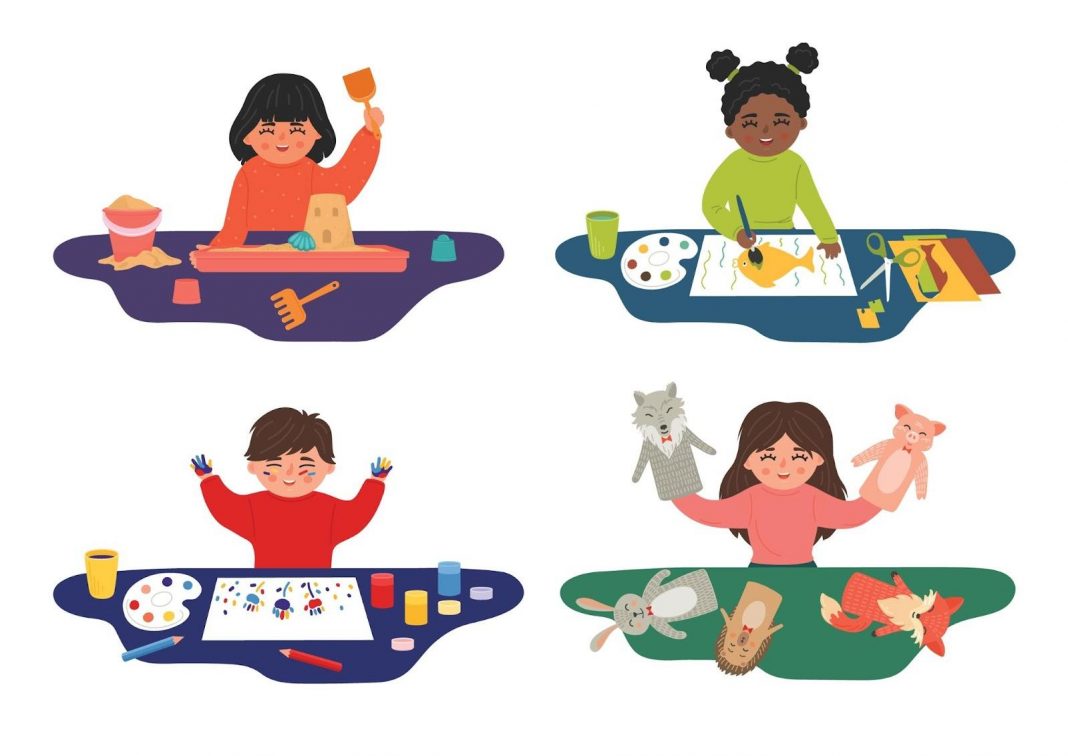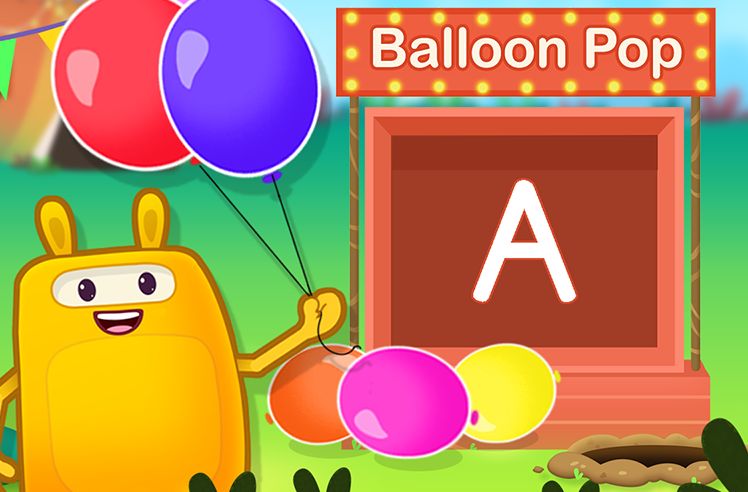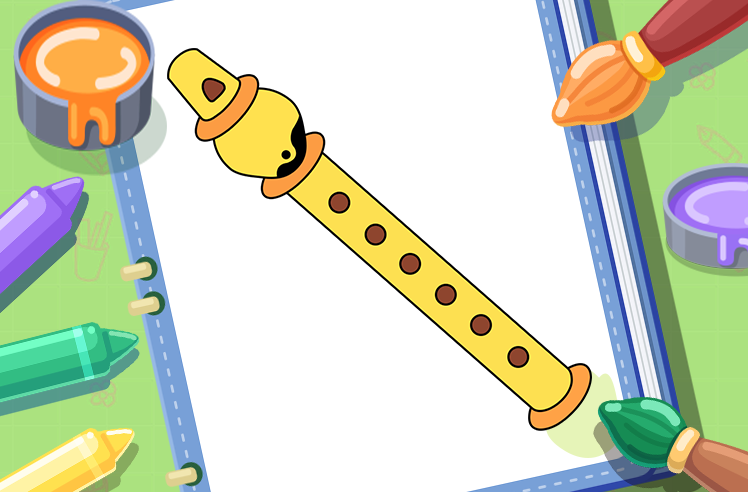When my little one first played with playdough, it was amazing to watch. She poked it, squeezed it, and her face lit up joyfully. That simple moment showed me how important sensory play is for kids. It’s not just fun; it’s a way for them to learn about the world. Sensory play is all about sensory activities that use the senses – touch, smell, sound, and taste.
Math & ELA | PreK To Grade 5
Kids see fun.
You see real learning outcomes.
Watch your kids fall in love with math & reading through our scientifically designed curriculum.
Parents, try for free Teachers, use for free
It’s a great way for kids to explore and learn. When they play with different textures or listen to various sounds, they’re not just playing but developing important skills like thinking and moving their hands and fingers well. In this blog, we will share fun sensory activities for preschoolers. These activities are more than just play; they’re important for helping kids grow and learn. So, let’s get started and have some fun with sensory play!
Enhance your child’s sensory play experience with engaging games. Perfect for preschoolers, these games make learning exciting and interactive.
What is Sensory Play?
Sensory play is when kids use their senses to play and learn. It’s like exploring with touch, smell, sound, and taste. Imagine playing with sand, smelling flowers, listening to music, or tasting different fruits. That’s sensory play!
Related Reading: How to Set Up a Sensory Room in Your School: 8 Easy Steps
24 Best Sensory Activities for Preschoolers
Now, let’s dive into the heart of our sensory adventure – the best sensory activities for preschoolers.
Before we start, a quick note on safety and age-appropriateness: While these activities are chosen with preschoolers in mind, it’s always important to supervise children during play. Ensure the materials used are safe, non-toxic, and suitable for their age. Some activities might require adult preparation or assistance, especially when they involve small parts or materials that could be messy. Always adapt the activities to suit each child’s needs and abilities, ensuring a safe and enjoyable experience.
4 Best Sensory Activities for Sight
1. Online Educational Activities and Games
These games on computers or tablets have bright colors and moving pictures. Kids look at the screen and find things like shapes, letters, or numbers. This helps their eyes get better at following moving things and noticing details. It’s like exercise for their eyes! Plus, these games often change quickly, which helps kids learn to shift their focus and improve their visual tracking skills.
Here are some fun games to improve sight recognition, enhance color differentiation, and sharpen focus and attention:
Related Reading: Best Virtual Games for Classroom Fun & Learning
2. Color Sorting Games
Kids get lots of things in different colors, like blocks or buttons. They put the same colors together. This helps their eyes learn to see and tell apart different colors. It’s good for learning to notice small differences in colors. Sorting by color also helps kids develop their ability to categorize and organize visually, which is important for visual memory.
Related Reading: Best Color Activities for Preschoolers to Boost Creativity
3. Picture Puzzles
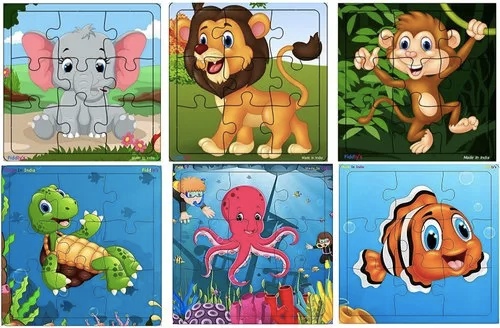
Give kids puzzles with pieces to put together. They look at the shapes and pictures to find where each piece goes. This is good for their eyes to learn how to see how different shapes fit together. Completing puzzles also enhances their ability to recognize patterns and details, which is crucial for developing strong visual perception skills.
Related Reading: Best Math Puzzles for Kids to Improve Cognitive Abilities
4. Shadow Play

Use a light in the dark to make shadows with hands or toys. Kids try to guess what the shadows are. This helps their eyes learn to understand shapes and sizes, even when they look different as shadows. Shadow play also encourages imagination as children interpret various shapes, helping them understand visual information in creative ways.
Related Reading: Best Shape Activities For Preschoolers
5 Sensory Activities Ideas for Sound
1. Online Music Games
Online music games offer a unique dimension to sensory sound activities, engaging children beyond just the visual elements. These games are designed with rich auditory features, including diverse sound effects, engaging music, and spoken instructions or narratives. This auditory engagement immerses children in a soundscape that enhances their listening skills and auditory processing.
As they interact with these games, children learn to distinguish different sounds, follow auditory cues, and associate sounds with specific actions or outcomes. This not only makes the learning experience more enjoyable but also significantly contributes to their auditory sensory development.
Here are some fun games designed to enhance your child’s sensory learning experience:
Related Reading: Best Auditory Learning Techniques: A Teachers' Guide
2. Sound Matching Activity
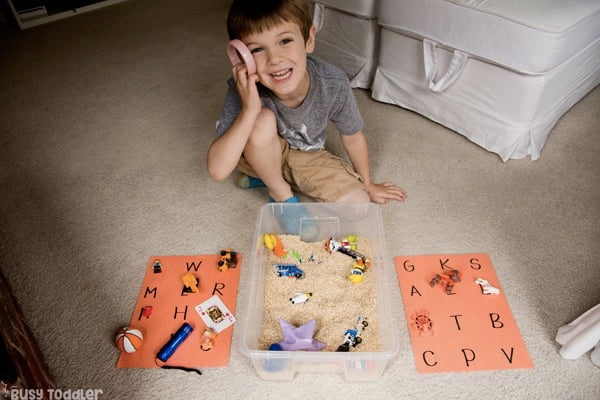
This activity involves matching sounds from different containers. Items like bells, beads, and rice create unique sounds. Fill pairs of small containers with various items that make distinct sounds. Children shake the containers and try to match the pairs by listening. This activity enhances auditory discrimination and memory, as children learn to differentiate and recognize various sounds. It’s an engaging way to develop listening skills and concentration.
Related Reading: Best Concentration Games for Kids to Improve their Focus
3. Musical Instrument Exploration
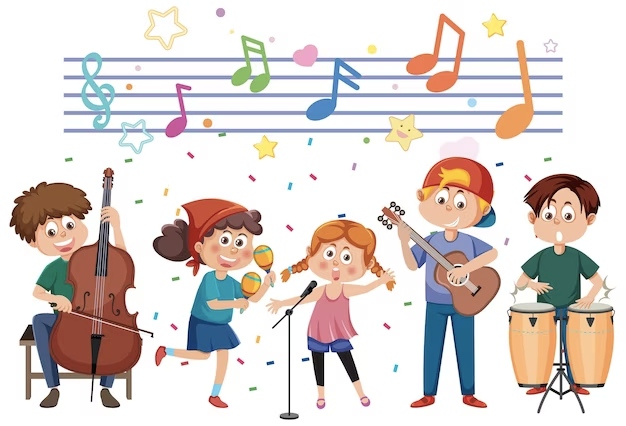
Kids explore and play with different musical instruments, discovering various sounds. Provide a range of musical instruments like drums, xylophones, or shakers. Let the children experiment with creating sounds. This activity fosters an appreciation for music and rhythm while also aiding in developing fine motor skills and auditory processing.
Related Reading: Best Fine Motor Activities For Preschoolers
4. DIY Sound Shakers
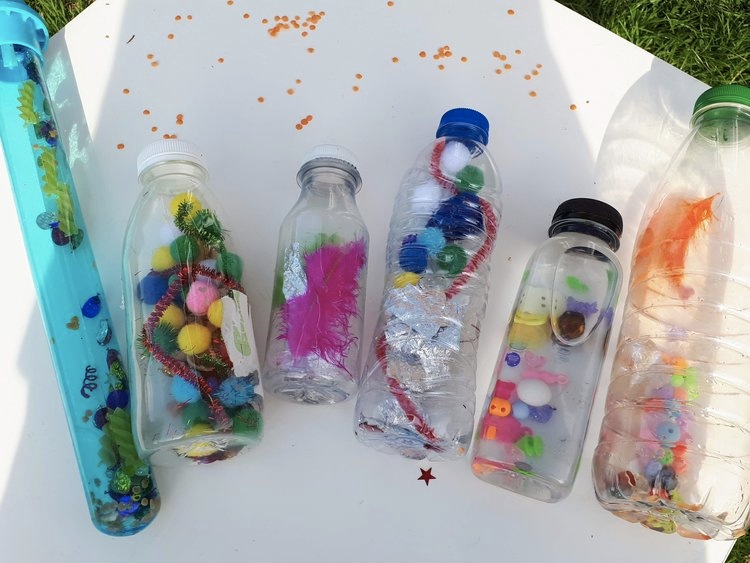
Children create their sound shakers using materials like rice, beans, or beads in containers. Give children small containers and a variety of materials to fill them with. Once they create their shakers, they can explore the sounds they make. This craft activity encourages creativity and experimentation with sound while also developing fine motor skills and understanding of cause and effect.
5. Storytelling with Sound Effects

Children listen to stories enhanced with sound effects, either recorded or created by them. Read a story and incorporate sound effects using objects or instruments. Alternatively, have the children create the sounds themselves. This activity stimulates imagination and listening skills. It also helps understand narrative structure and sound’s role in storytelling.
Related Reading: Best Storytelling Activities for Kids
5 Sensory Activities Ideas for Smell
6. Smell Matching activity
This activity involves matching pairs of containers based on their scents. Items like coffee, vanilla, and citrus are used. Fill small, identical containers with various scented items. Children sniff each container and try to match pairs by smell. This is one of the best preschool sensory activities that enhances their sense of smell and memory. It also encourages cognitive development as they learn to associate scents with their sources.
7. Herb Garden Exploration
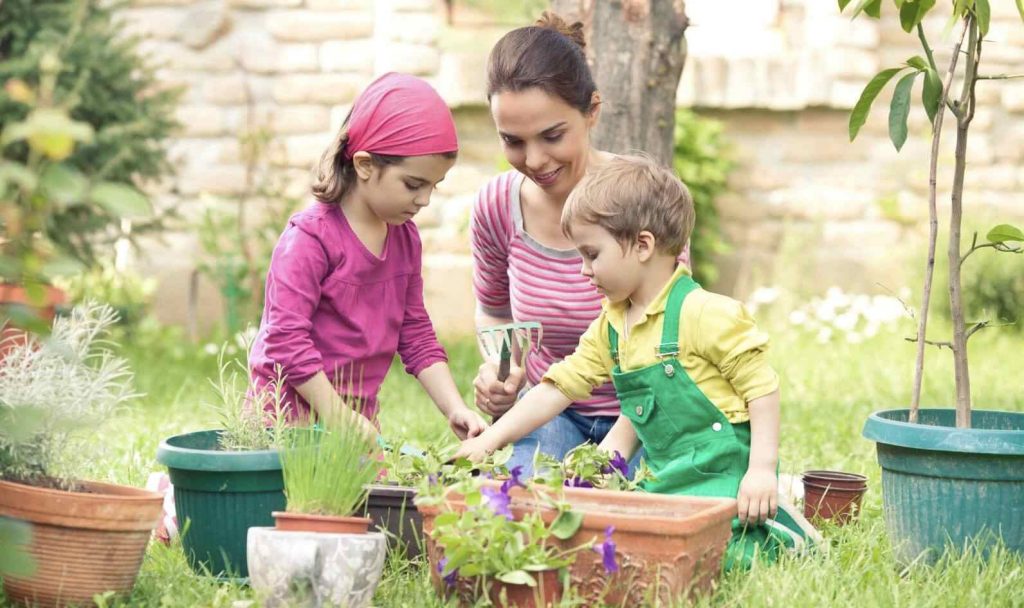
Children explore and smell different herbs like mint, basil, and rosemary in a garden or pots. Plant a small herb garden or use potted herbs. Let the children smell and touch the herbs, discussing each scent. This activity is one of the best outdoor sensory activities, teaching kids about nature and different plant scents. It also encourages an understanding of where food comes from.
8. Scented Water Play
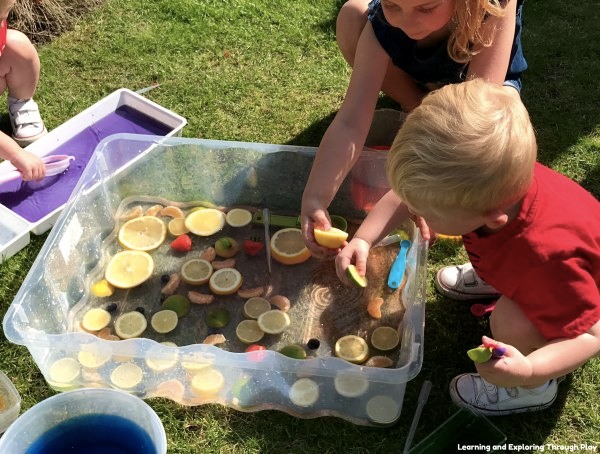
Water is infused with different scents, and children play and explore these scented waters. Add natural scents like lemon, lavender, or mint to water in large bins. Children can play with the water, using cups and spoons. This is one of the most easy sensory activities that introduce children to various scents in a playful, hands-on manner. It also helps develop their fine motor skills and understand liquid properties.
9. Aromatic Art Projects
Children create art using scented materials like scented markers or stickers. Provide scented markers, stickers, or even scented glue for craft projects. As children create art, they experience different smells, making it one of the most unique preschool sensory activities. This activity stimulates their creativity and sensory exploration, combining artistic expression with olfactory stimulation.
Related Reading: Super Cool Art Activities for Kids
10. Blindfolded Scent Guessing
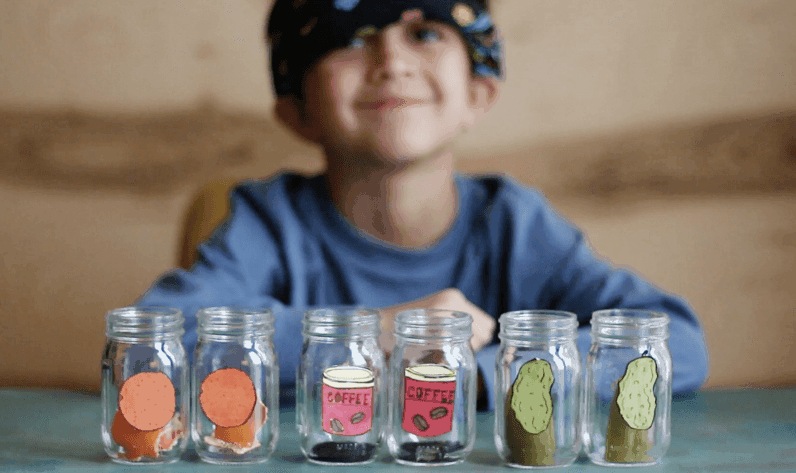
Children are blindfolded and guess different smells from various items like fruits, spices, or flowers. Blindfold the children and let them smell different items, asking them to guess what they are. This activity sharpens their sense of smell and enhances their descriptive language skills. It’s a fun and educational way to develop sensory awareness and cognitive skills, making it a valuable addition to sensory activities for kids.
5 Sensory Activities Ideas for Touch
11. Texture Scavenger Hunt
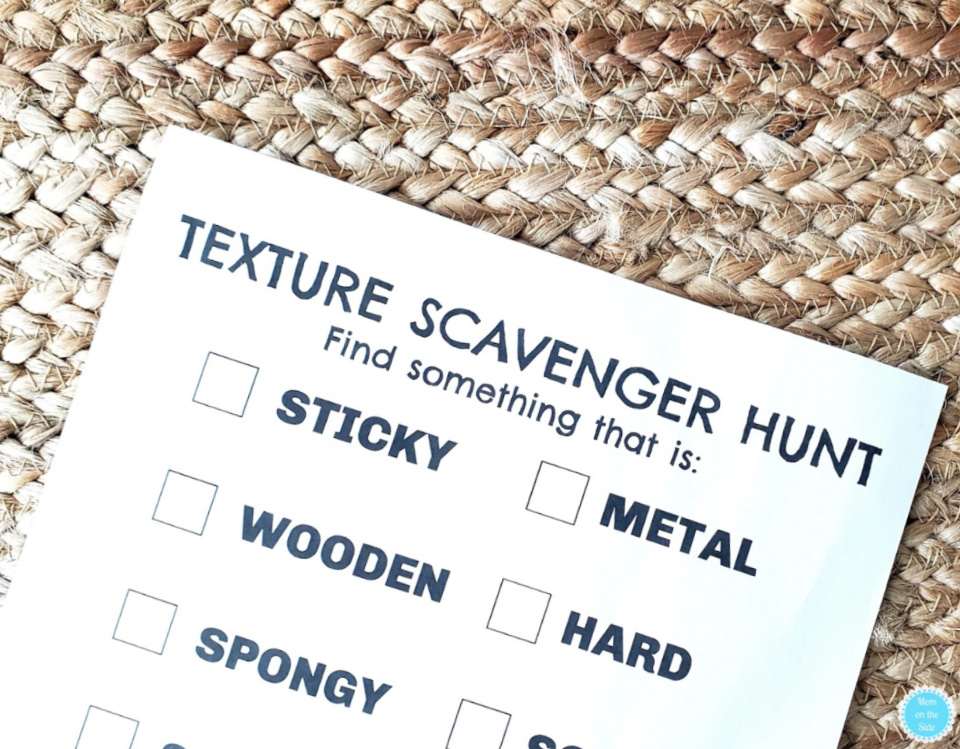
In this engaging activity, kids search for items with different textures. They find smooth, rough, squishy, hard, and soft things. Organize a scavenger hunt with items of various textures in the classroom or playground. Preschoolers will search and identify each texture, enhancing their sensory experiences. This activity improves their observational skills and helps them understand and categorize different materials. It’s a playful and educational approach, making it one of the ideal sensory activities for preschoolers, fostering curiosity and tactile awareness.
12. Homemade Sensory Bins
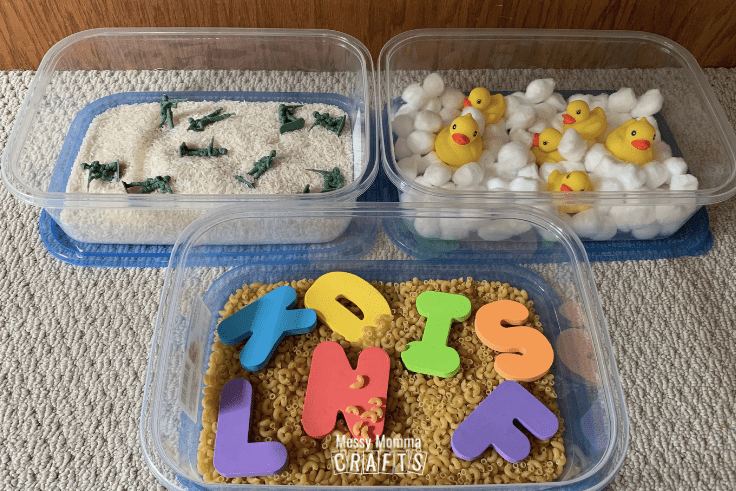
Sensory bins are filled with materials like rice, beans, or sand. Kids dig in to find hidden objects. Create bins with different materials and hide small objects for children to find. As they dig and sift through the bins, they engage in sensory activities for kids, learning about textures, shapes, and sizes. This hands-on exploration is crucial for developing fine motor skills and cognitive abilities. It also encourages problem-solving as they search for specific items, making it a fun and educational sensory experience.
13. Finger Painting
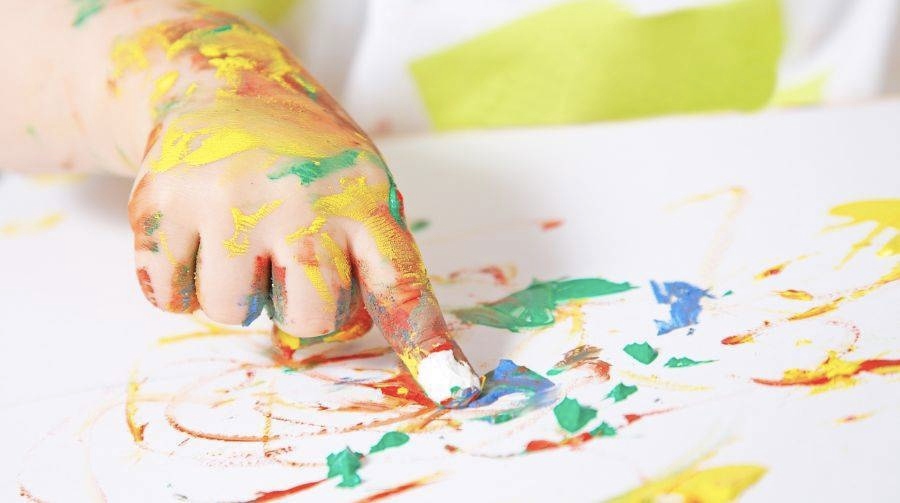
With finger painting, children use their hands to create colorful art. They mix colors and feel the paint. Set up a finger painting station with non-toxic paint and paper. As kids use their fingers to paint, they engage in sensory activities for preschoolers. This activity not only enhances creativity but also provides a rich sensory experience. It allows children to explore different textures and colors, improving their sensory processing and fine motor skills. Finger painting is also a great way for children to express themselves and develop an understanding of artistic concepts.
If you want to avoid the mess of actual colors, check out these engaging online coloring games for kids. They’re perfect for creative, mess-free fun:
14. Nature Texture Collage
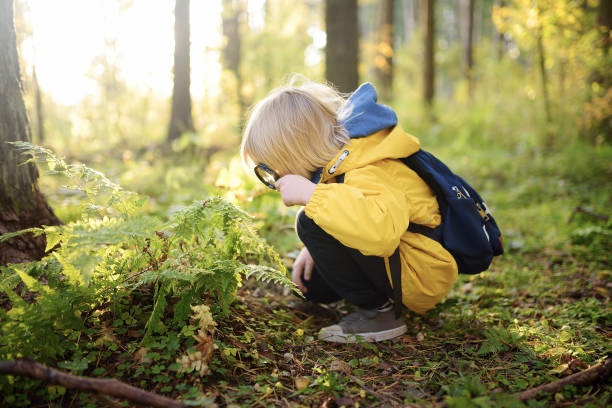
Children collect natural items like leaves and twigs to make a collage. They feel and compare different textures from nature. Children use their findings to create a collage after collecting natural items during a nature walk. This activity offers a unique sensory experience, teaching them about the diverse textures found in nature. It’s an excellent way to encourage environmental awareness and creativity. Making a collage helps develop fine motor skills and encourages children to think critically about composition and design, making it a valuable addition to sensory activities for preschoolers.
15. Play Dough Exploration
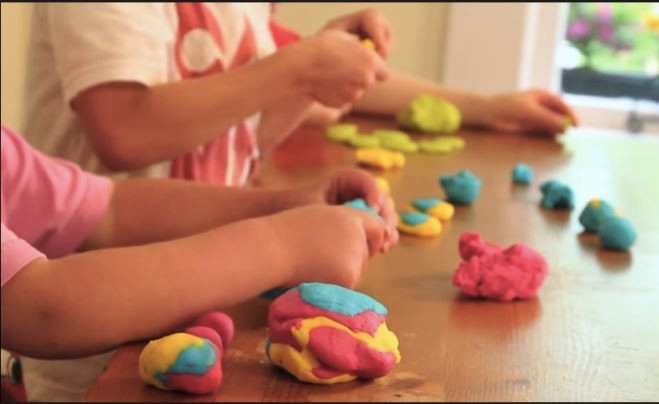
Kids use play dough to create shapes and figures. They roll, squeeze, and mold the dough. Provide children with play dough and various shaping tools. This activity is a cornerstone of sensory activities for kids. It aids in developing hand strength, dexterity, and coordination. Children manipulate the dough and engage in creative thinking and tactile exploration. Playdough activities also offer opportunities for imaginative play, which is crucial for cognitive development and emotional expression.
5 Taste-Safe Sensory Activities Ideas
16. Edible Finger Paints
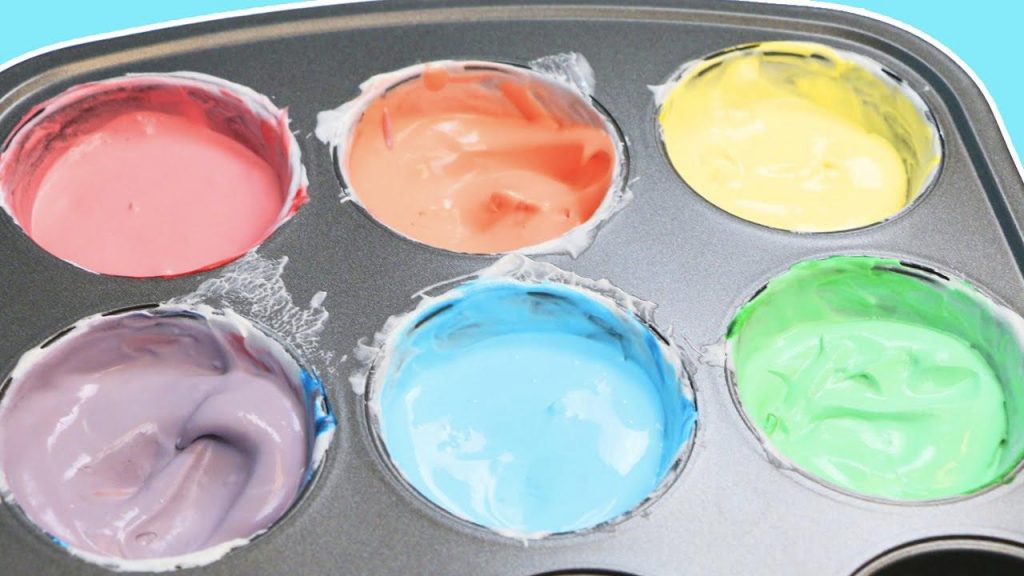
Children use edible finger paints from food items to create colorful art. Make finger paints using food coloring mixed with yogurt, pudding, or cornstarch, and water. Let the kids paint on paper or a large tray with these edible paints. This activity is safe for little ones who might taste their art materials. It encourages creativity and sensory exploration while also being a fun way to introduce colors and textures.
17. Cooked Spaghetti Play
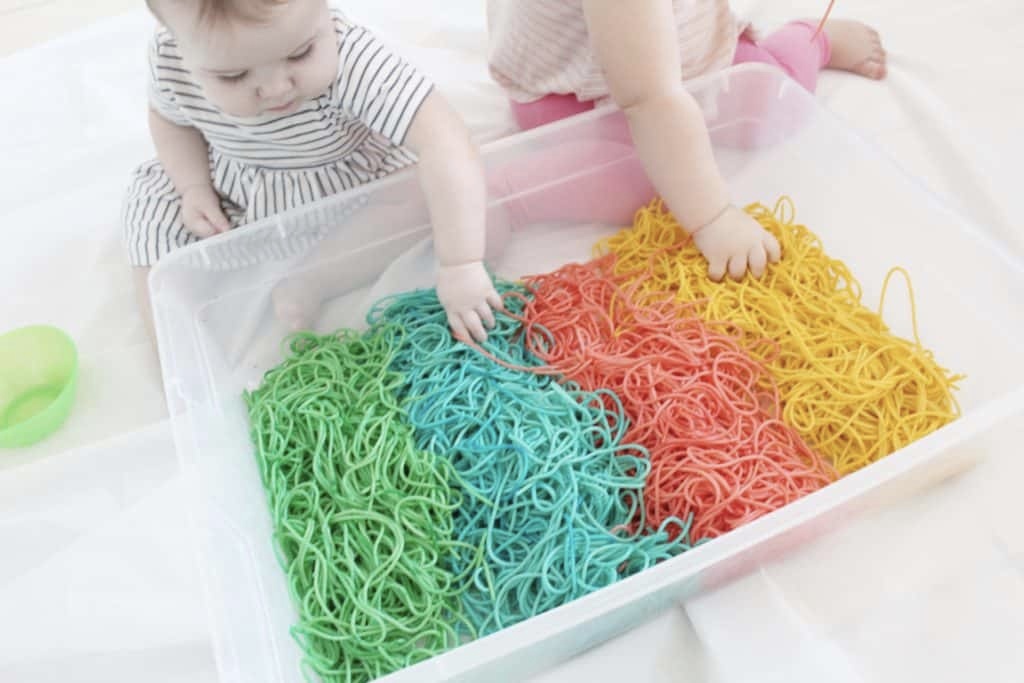
Kids play with cooked, cooled spaghetti which can be colored with food-safe dye. Cook spaghetti, let it cool, and optionally add food coloring. Place it in a large bin for children to touch, squish, and explore. This activity is great for tactile exploration and is completely safe if the children taste it. It helps in developing fine motor skills and provides a unique sensory experience.
18. Taste-Safe Mud Play
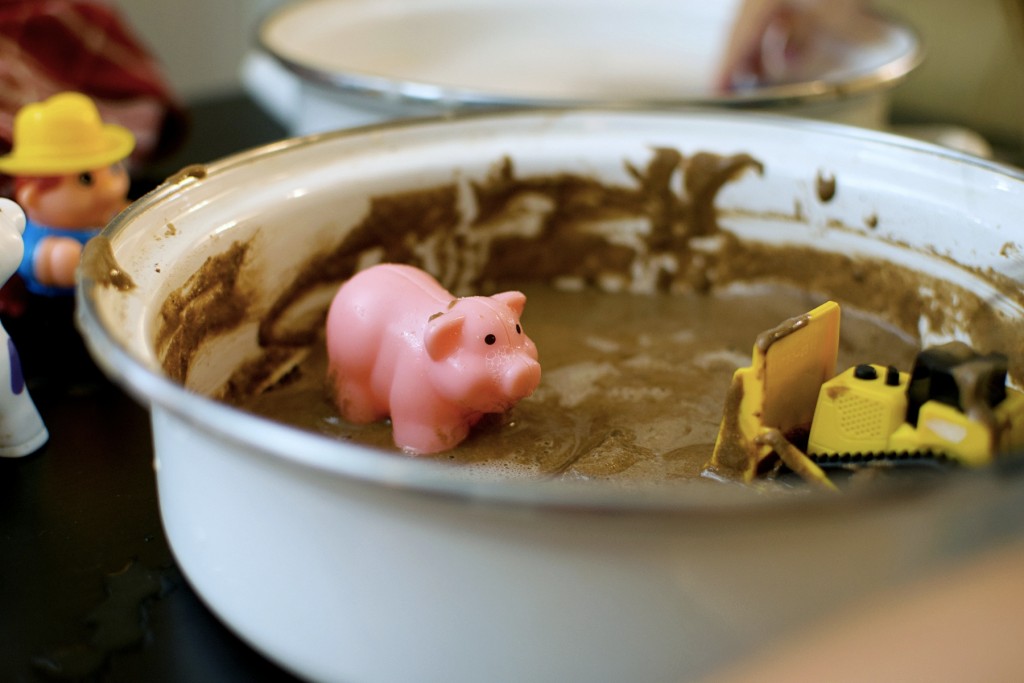
Children play with homemade, edible ‘mud’ made from cocoa powder and cornstarch. Mix cocoa powder with cornstarch and water for a mud-like consistency. Let the kids play with this safe, edible mud, using toys or their hands. This sensory play is perfect for children inclined to put things in their mouth, offering a safe and enjoyable sensory experience while stimulating their sense of touch and smell.
19. Edible Sand Play
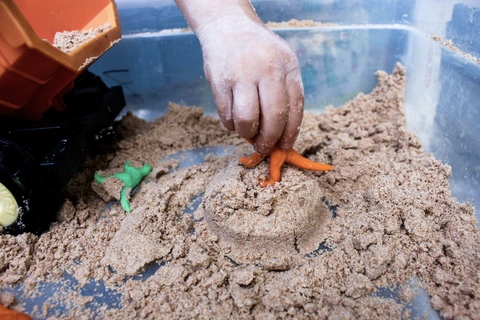
Kids play with edible sand made from crushed cereal or cookies. Crush cereal or cookies into a fine sand-like texture. Children can use this edible sand for play, scooping and building with it. This activity is taste-safe and offers a fun, tactile experience. It’s also a great way to develop fine motor skills and encourage imaginative play.
Related Reading: Best Children's Books to Stimulate Kids' Imagination
20. Jelly Dig
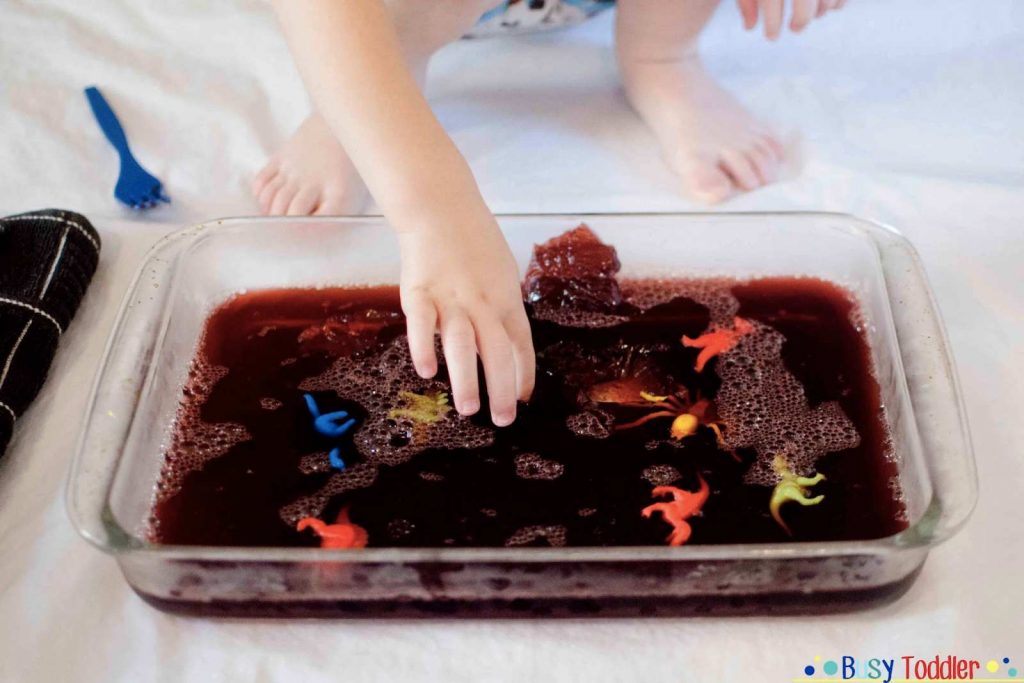
Children explore and dig through gelatin to find hidden, edible treasures. Prepare gelatin in a large container and hide edible items like fruit pieces inside. Once set, let the children dig through the jelly to find the treasures. This activity is not only taste-safe but also provides a unique sensory experience. It helps in developing hand-eye coordination and sensory exploration skills.
Related Reading: Best Counting Activities for Preschoolers
4 Benefits of Sensory Activities for Preschoolers
- Enhances Cognitive Development: Sensory play activities are crucial for brain development. They help children learn problem-solving skills and understand the world around them. By exploring different textures, smells, and sounds, kids develop their ability to process and respond to sensory information.
- Improves Motor Skills: Sensory play for preschoolers is great for improving both fine and gross motor skills. Activities like scooping, pouring, and molding strengthen hand-eye coordination and dexterity. This is important for everyday tasks like writing, tying shoes, and using utensils.
- Boosts Language Skills: Engaging in sensory activities helps children expand their vocabulary. They learn new words and ways to express themselves as they describe what they feel, see, and smell. This enhancement of language skills is a key benefit of sensory play.
- Encourages Scientific Thinking and Exploration: Sensory activities naturally lead to questions and discoveries. Children learn cause and effect, make predictions, and test their hypotheses during sensory play. This kind of exploration fosters early scientific thinking and curiosity.
In conclusion, sensory play is not just an avenue for fun but a vital part of a child’s development. From the moment my little one first interacted with playdough, the benefits of sensory play became clear. It’s through these sensory play activities that children like mine explore and make sense of their world. They’re enjoying themselves and building crucial skills in thinking, language, and motor development.
Whether it’s feeling different textures, smelling various scents, or hearing new sounds, these activities provide rich experiences that nurture young minds. So, let’s embrace sensory play for preschoolers, recognizing its power to shape our children’s early learning experiences.
Frequently Asked Questions (FAQs)
What age is sensory play appropriate for?
Sensory play is suitable for children of all ages, but it’s especially beneficial for toddlers and preschoolers. It helps their early development stages, enhancing sensory processing, motor skills, and cognitive growth.
Can sensory play activities be done at home?
Absolutely! Many sensory play activities can be easily set up at home with everyday materials. Activities like finger painting, homemade sensory bins, and edible playdough are both fun and simple to create in a home environment.
How often should children engage in sensory play?
Children can benefit from sensory play daily. Regular sensory activities help in the consistent development of their skills. However, the key is to keep the activities varied and enjoyable without any pressure.

















